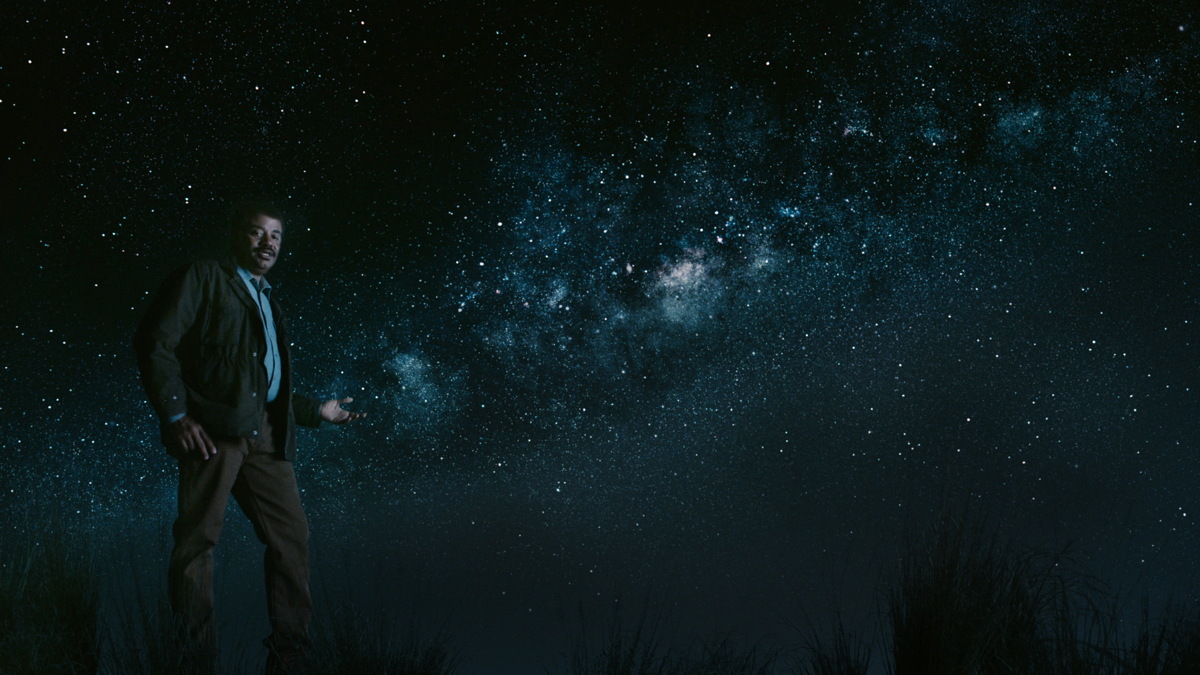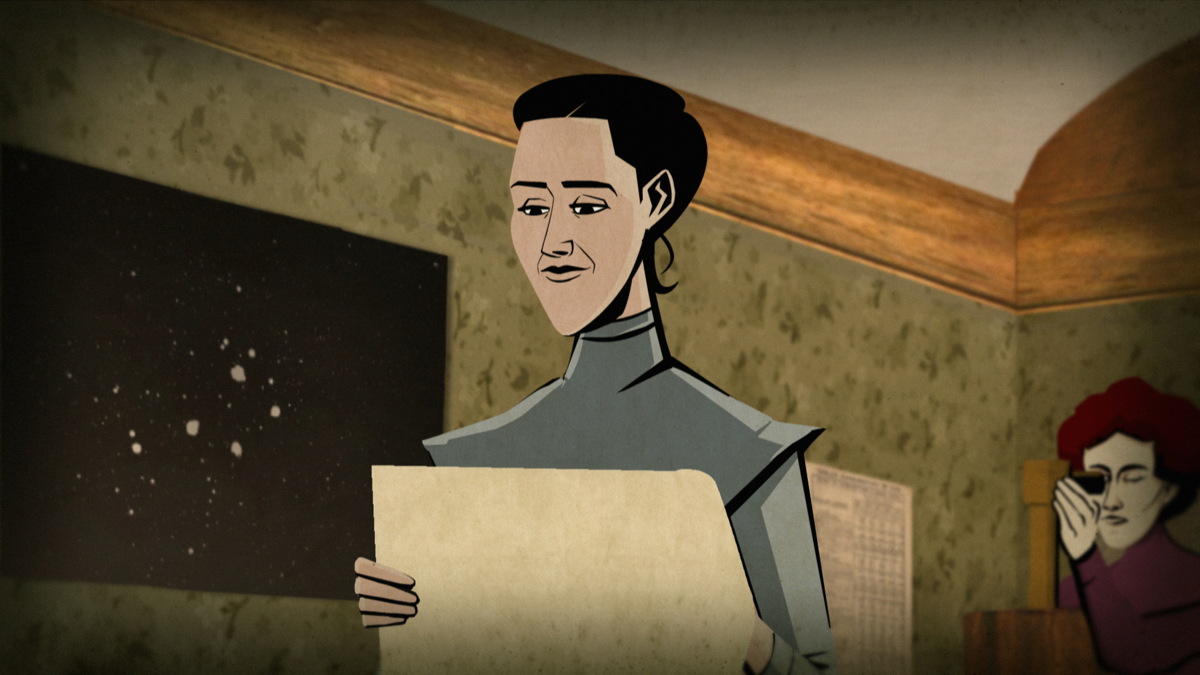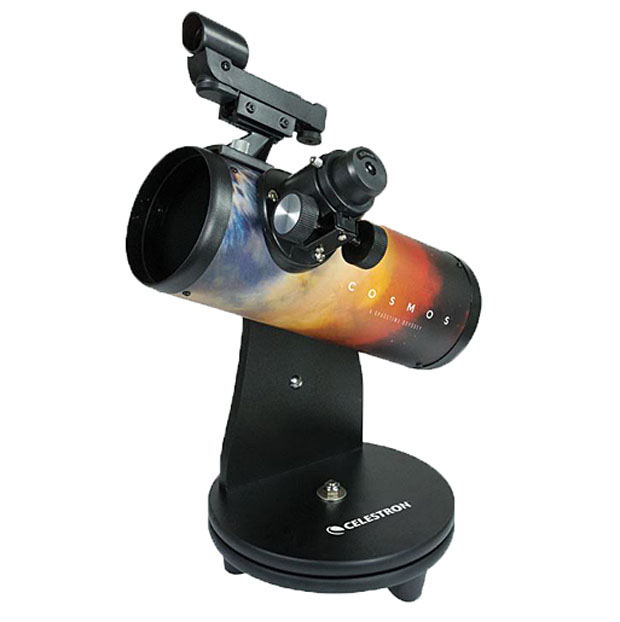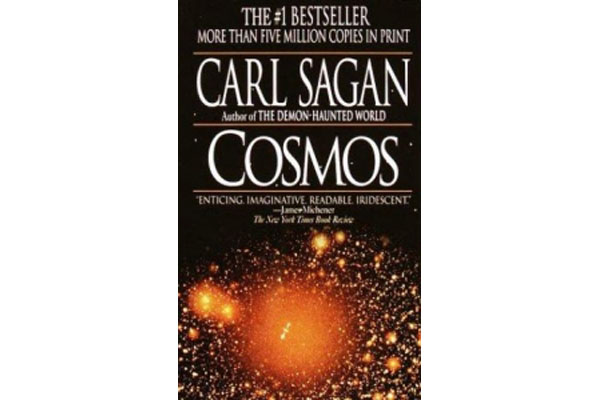'Cosmos' Recap: Female Astronomers and 5 Surprising Star Facts

A group of female scientists is responsible for completely changing the way humans understand the stars of the night sky.
Sunday night's (April 27) episode of "Cosmos: A Spacetime Odyssey" detailed the lives of the women who worked to learn more about what the stars are made of and how they're classified. The show delved deeply into their lives while presenting some incredible star facts. Here are five stellar facts from "Cosmos":
The Pleiades star cluster has many origin myths
Cultures around the world have developed stories for how the Pleiades star cluster — sometimes known as "the seven sisters" — formed in the night sky. Native Americans thought the cluster formed when a group of women chased by bears asked a stone to help them run from the animals. The stone rose up, protecting them and forming Devil's Tower in Wyoming. The women then became the stars of the cluster. [See amazing photos from "Cosmos: A Spacetime Odyssey"]
In Greek mythology, Orion the Hunter chased the seven sisters around Earth. After crying out to the gods for help, the sisters were turned into the stars of the cluster. The gods also placed Orion in the sky after the sting of a scorpion killed him.
Our ancestors "wove brilliantly imaginative stories, but they can bring us no closer to the stars than our dreams," Neil deGrasse Tyson, the host of "Cosmos," said during the show. "It took another few thousand years until three brilliant scientists unlocked the secrets of the true lives of the stars."
Astronomer Annie Jump Cannon revolutionized star classification
Breaking space news, the latest updates on rocket launches, skywatching events and more!
Annie Jump Cannon, a woman who worked in Edward Charles Pickering's laboratory at Harvard University, came up with a classification system for stars based on their spectra — interpreted light patterns that tell scientists what a star is made of. Cannon was the first person to develop a modern system of classification for stars.
Cannon classified hundreds of thousands of stars during her lifetime, and her classification system is still in use today, albeit with some minor changes.
"It took Cannon decades to classify the spectral character of hundreds of thousands of stars according to the scheme that she devised," Tyson said.
Another woman in the laboratory, Henrietta Swan Leavitt, was responsible for developing a system for measuring distances in the cosmos.
In her Ph.D. thesis, Cecilia Payne-Gaposchkin — building on Cannon's work — proposed a brilliant idea for explaining the composition of stars, yet it wasn't recognized until years later. Payne-Gaposchkin's professor disagreed with her thesis on stellar atmospheres — which explained that the temperatures and spectra of stars are linked — even though it turned out to be correct.
Payne found the temperature scale of stars by understanding the abundances of hydrogen and helium in them. It took four years for her professor to see it her way, Tyson said.
"Payne's 'Stellar Atmospheres' is widely regarded as the most brilliant Ph.D. thesis ever written in astronomy," Tyson said. "It became the standard text in its field … Cecilia Payne's interpretation of Annie Jump Cannon's sequence of stellar spectra made it possible for us to read the life stories of the stars."
Stars die in many ways
Star deaths are diverse, Tyson said. Depending on a star's mass and its interactions with surrounding objects, it can die in a number of ways. For example, a star like the sun will eventually expand to a red giant and then slough off its outer layers to become an incredibly dense white dwarf.
Other stars, like the blue supergiant Rigel, could go supernova in a massive stellar explosion that will make the star seem to shine even more brightly from Earth before dimming. Rigel could then become a pulsar, a fast-spinning neutron star the size of a city, Tyson said.
A huge star may go "hypergiant" anytime now
The gigantic star Eta Carinae could explode within our lifetimes, Tyson said. Eta Carinae is actually at the upper limit of how massive a star can get, at 100 times more massive than the sun. Instead of exploding as a supernova, the massive star 7,500 light-years from Earth could explode as a hypernova — an even brighter, more intense kind of stellar explosion.
When Eta Carinae goes hypernova, observers in the Southern Hemisphere should be able to see the bright outburst from the surface of Earth, Tyson said. While the massive explosion could affect star systems around Eta Carinae, it won't pose any danger to Earth, Tyson added. Instead, it will look like a bright star that suddenly appeared in the night sky.
"Cosmos: A Spacetime Odyssey" airs Sundays at 9 p.m. ET/PT on Fox. It is rebroadcast on the National Geographic Channel on Mondays at 10 p.m. ET/PT. Check local listings.
Follow Miriam Kramer @mirikramer and Google+. Follow us @Spacedotcom, Facebook and Google+. Original article on Space.com.

Miriam Kramer joined Space.com as a Staff Writer in December 2012. Since then, she has floated in weightlessness on a zero-gravity flight, felt the pull of 4-Gs in a trainer aircraft and watched rockets soar into space from Florida and Virginia. She also served as Space.com's lead space entertainment reporter, and enjoys all aspects of space news, astronomy and commercial spaceflight. Miriam has also presented space stories during live interviews with Fox News and other TV and radio outlets. She originally hails from Knoxville, Tennessee where she and her family would take trips to dark spots on the outskirts of town to watch meteor showers every year. She loves to travel and one day hopes to see the northern lights in person. Miriam is currently a space reporter with Axios, writing the Axios Space newsletter. You can follow Miriam on Twitter.




